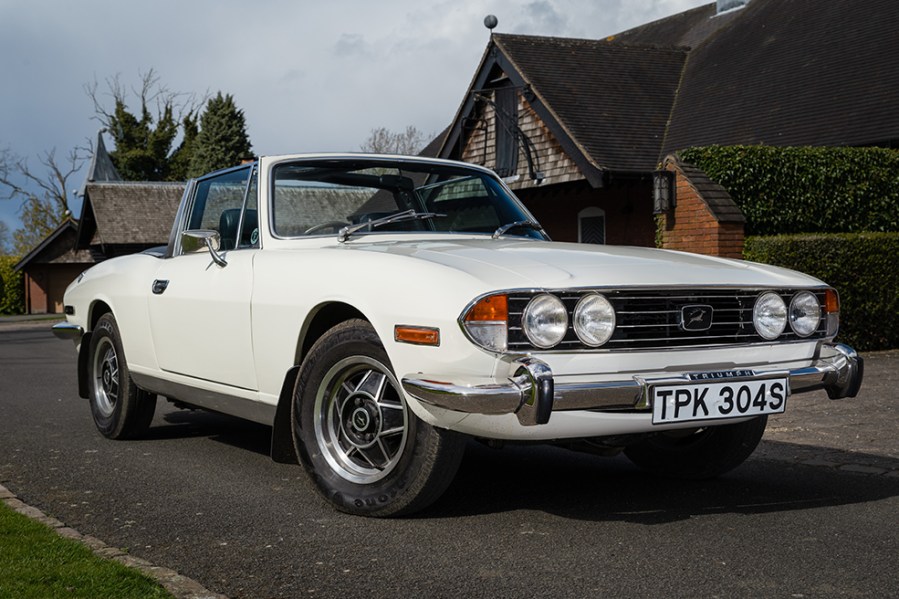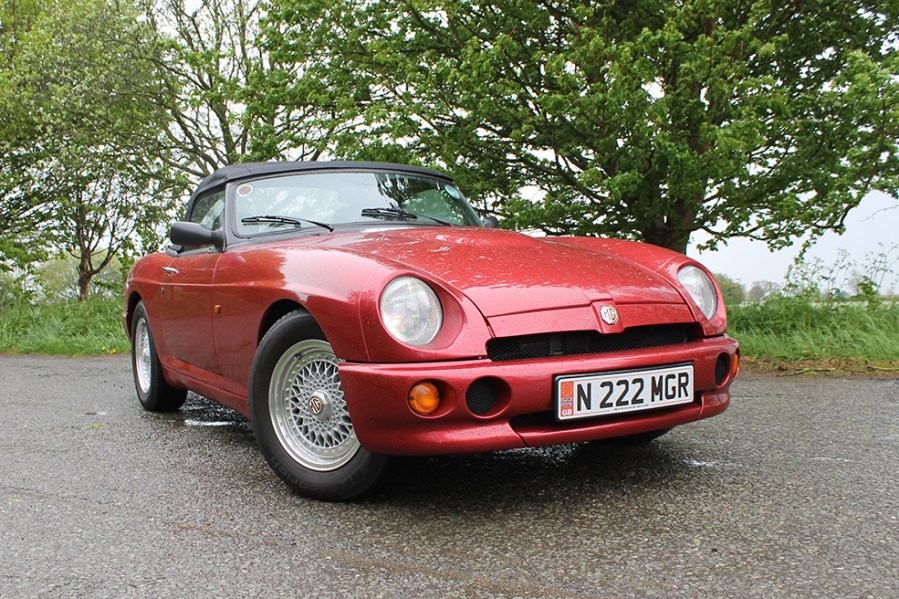Introduced in the wake of the original MX-5, the MG RV8 was a hit in Japan and remains a great modern-ish MGB alternative
With thanks to: Victor Smith (MG Car Club V8 Register), Clive Wheatley (mgv8parts)
The hugely popular MGB had bowed out in rubber-bumpered glory in 1980, so it was something of a surprise when the RV8 appeared more than a decade later. MG enthusiasts still hankered after a traditional roadster, though, and there was a gap to fill before the MGF arrived. The RV8 was the perfect short-term answer – one made possible by the production of MGB bodyshells by British Motor Heritage.
Development began in the late 1980s, with the new model – and it was effectively new despite the familiar looks – being launched at the 1992 British Motor Show, going into production the following year. Buyers were treated to muscular looks, a characterful Rover V8 and an opulent cabin; but despite the tempting recipe, just 1983 examples would be built before production ceased in 1995.
Some 80 per cent of those cars were exported to Japan, where the RV8 proved a smash hit, and plenty have been reimported to the UK since.
Bodywork
Extensive anti-corrosion treatments ensured the RV8’s bodyshell was good at resisting rot, but at three decades old it’s not going to be completely immune. A thorough examination of the panels is wise, with a particular focus on the windscreen surround where the bottom of the frame can rust badly – bubbling or waviness of the screen rubber is a sign of problems. A complete replacement made from steel/composite is around £1000.
It’s also worth ensuring that light units are undamaged, although the Porsche-sourced headlamps are easy to find and the once-unobtainable rear lights are now being remade thanks to parts specialist, Clive Wheatley. Check the bodywork for the usual signs of damage and accident repairs, too, although specialists can supply most replacement panels. Lastly, examine the hood for signs of wear and splits; water ingress will damage interior trim, and a good quality mohair replacement is around £1000.
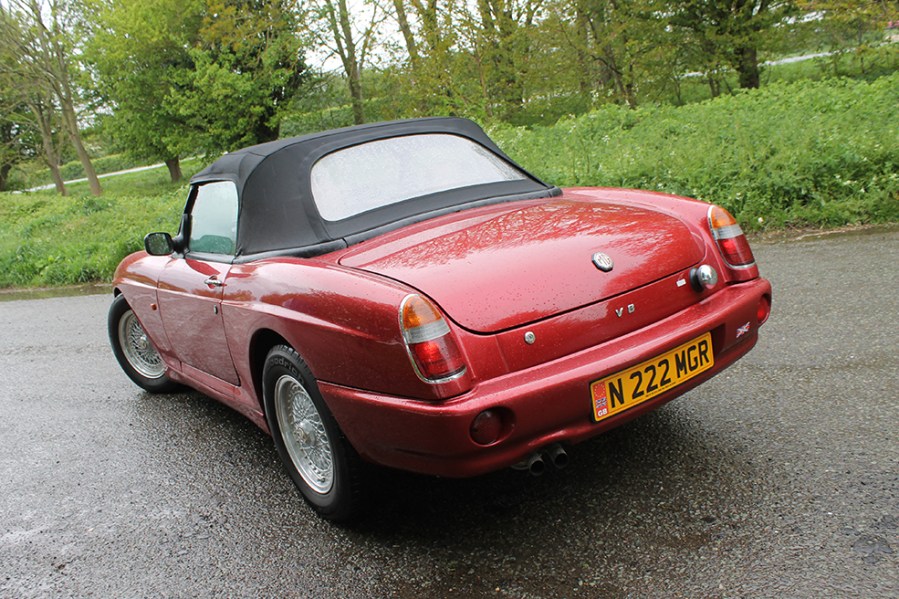
Engine and transmission
The trusty Rover V8 is incredibly well-served when it comes to parts and rebuild expertise, and it will cover big mileages with proper care. Oil and filter changes every 3000 miles will help prevent sludging of the oil galleries and wear of the camshaft and valve-gear, but look for leaks and for signs of compromised head gaskets.
RV8s aren’t known to suffer from cooling issues but a thorough check of the system is a good move; proper antifreeze levels are required to prevent internal corrosion while leaks from the inlet manifold and plastic expansion tank (an improved version is £75) are the commonest issues. Problems with the engine management ECU or sensors will need specialist diagnosis using the correct Rover kit, and ask the vendor about any performance mods such as an ECU remap.
Cars reimported from Japan require a modification to the ignition’s advance/retard set-up involving a pipe from distributor to plenum chamber, but it’s easy and cheap. Rattling from the exhaust system often points to catalytic convertors in need of replacement.
As for the transmission, early cars used the LT77 gearbox which was replaced in 1994 (after VIN 0644) with the R380 unit identified by reverse being down and to the right. It can be harder to source parts for the former, and both need checking for the usual issues of worn synchromesh and noisy bearings; budget £1500 or so for a re-built ’box. The Quaife differential – an automatic torque biasing type – shouldn’t be notably noisy but check it for leaks; regular oil changes are wise using fully-synthetic lubricant.

Suspension, steering and brakes
The RV8’s suspension was thoroughly conventional, with coilover damper units at the front and a live axle and leaf springs aft. It’s worth a check for any corrosion of components or mounting points but parts are easy to source and inexpensive, and it’s DIY-friendly. There’s the option to convert to an independent set-up at the back (which also adds rear disc brakes) and you can buy a complete kit from Hoyle Engineering; being quite a pricy job, consider it a bonus if a previous owner has already taken this route.
Talk of conversions brings us to the steering. It’s a manual rack and pinion system (MG did experiment with power assistance but it was dismissed on grounds of cost) and will feel heavy if you’re used to modern cars. An assisted system is a popular upgrade with the potential for electro-hydraulic or fully electric set-ups (some Japanese cars used the latter from the MGF).
It would be a good idea to seek advice from specialists or the MG Car Club’s V8 Register before committing, and you’ll need to budget a couple of thousand pounds. That issue aside, check for the usual wear in ball joints and for cracks where the rack mounts to the crossmember; if the rack itself is worn, you’re looking at around £450 for a rebuilt unit.
The disc/drum brakes are trouble-free and just need a check for wear and tear and for corroded and seized parts on little-used examples; overhauling them is neither difficult nor costly. Lastly, look for aging tyres that are due for replacement, and for alloy wheels suffering from damage or corrosion.
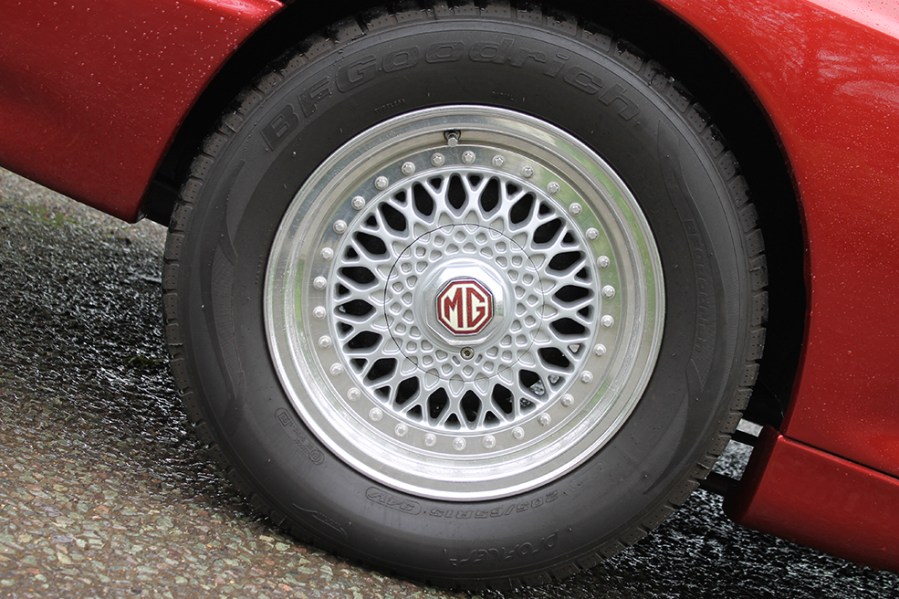
Interior, trim and electrics
The use of top-quality Connolly leather and burr elm trim meant the cabin felt truly luxurious, and you’ll want to ensure that both are in good condition as the cost of major refurbishment will soon mount-up. For example, new seat covers cost around £1400 per pair. Sorting the common problem of a worn gear knob is rather cheaper.
While on the matter of seats, taller drivers may find the driving position a bit awkward but a modification can lower the seat by an inch or so. One notable difference between UK and Japanese cars is that the latter got air conditioning, although the gubbins required did rob some space from the passenger footwell; it’s often removed for that reason, so you’ll need to check on the car you’re considering. If it is still present, does it work?
As for the electrics, it’s all very straightforward so just a matter of ensuring everything works, and checking that any changes required on reimported cars have been carried out. One other point to check is whether the original fob-operated alarm/immobiliser is still present and working – it could well have been replaced by an aftermarket system.
Our verdict
The RV8 was an instant classic and a good one will make a very practical long-distance cruiser. It may lack the practicality and ubiquitous parts support of its older sibling but the RV8 has exclusivity, V8 power and luxury on its side.
RV8 prices have firmed up in recent years so you’ll need a healthy budget. A car that’s running but in need of restoration starts at around £10,000 while those in good order command £16,000–18,000. Excellent examples are at the £20,000 mark, but the very best low-milers can fetch considerably more. UK cars carried a premium at one time, although this isn’t really the case anymore.
A further issue used to be colour – with around two-thirds of RV8s painted Woodcote Green, this ubiquity had a negative effect on values, with other colours being worth notably more. That situation has changed, however, and the difference is now very small. In any case, the sensible thing is to buy on condition rather than worrying about the colour of the paintwork.
MG RV8 timeline
1991
Updated MGB project given green light to take on the then-new and very successful Mazda MX-5 using recently reinstated British Motor Heritage bodyshells
1992
MG RV8 shown to the public for the first time at the British International Motor Show in October
1995
Production ends with 1983 examples made; 1579 of those were sold in the Japanese market
MG RV8 alternatives
TVR Chimaera
As another recipient of the Rover V8, there’s power and performance aplenty along with an addictive noise. The old-school charm holds plenty of appeal and every drive will feel like an event, plus it’s comfortable (by TVR standards) and reasonably practical. Chimaera values are on a par with the MG, too, although you’ll need to buy carefully if you’re to avoid big bills. But find a good one and this characterful modern classic is guaranteed to put a big smile on your face.
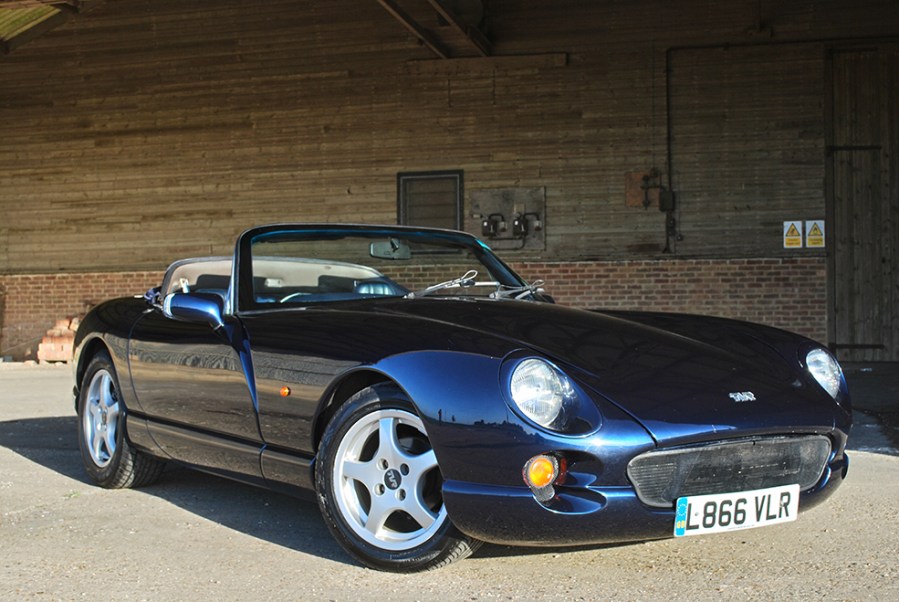
Triumph Stag
We’re sticking with the British V8 theme, albeit heading back to the ’70s. The Stag remains hugely popular and for good reason, combining style and a burbling motor to great effect. You don’t need to worry about the original V8’s foibles any more, but a full-on restoration should be approached with caution – it will swallow a lot of time and money. It’s not hard to find sound, well-maintained Stags, and you’ll benefit from plenty of great club and specialist support.
